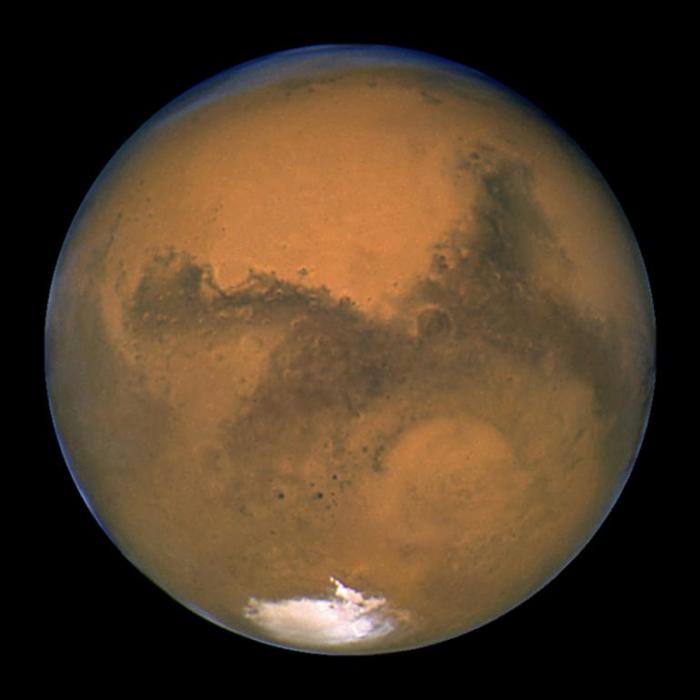Mysterious Giant Cloud Formations Above Mars Leave Scientists Without Answers

Scientists have been unable to explain how large mysterious cloud-like formations appearing above the surface of Mars could have formed, a phenomenon first spotted by astronomers in 2012.
"It raises more questions than answers," said Antonio Garcia Munoz, a planetary scientist from the European Space Agency.
The New Scientist pointed out that the plume stretched for close to 620 miles and was observed for 11 days when it was recorded by amateur scientists in March 2012.
"I was really quite amazed that it was sticking out the side of the planet quite prominently," said Damian Peach from Selsey, U.K., and was one of the first people to spot the formation.
BBC News said that the plume appeared twice more before vanishing. After three years of analysis, scientists have admitted they are unable to explain what the formation is or how it could have formed.
Peach said that at first when he saw the formation, he thought that there was a problem with his telescope.
"I noticed this projection sticking out of the side of the planet. To begin with, I thought there was a problem with the telescope or camera," the amateur astronomer explained.
"But as I checked more of the images, I realized it was a real feature — and it was quite a surprise."
Munoz noted that there have been auroras above Mars reported before, and that clouds on Mars reach up to 60 miles. One theory scientists have proposed is that the formation is a cloud of carbon dioxide or water particles.
"We are reporting a plume at 200km (124 miles), so it is significantly different. At 200km, we shouldn't see any clouds, the atmosphere is too thin — so the fact we see it for 20 days in total is quite surprising."
Munoz also proposed that the formation is the Martian version of the northern lights.
"We know in this region on Mars, there have been auroras reported before. But the intensities we are reporting are much much higher than any auroras seen before on Mars or on Earth," he added.
"It would be 1,000 times stronger than the strongest aurora, and it is difficult to come to terms that Mars has such an intense aurora."
As for theories that the formation could be biological and therefore a possible hint of alien life, scientists said there is no evidence of such a thing, but it can not entirely be ruled out.
"If there is no positive evidence, you should probably exclude something biological," said Nicholas Heavens of Hampton University in Virginia.





























